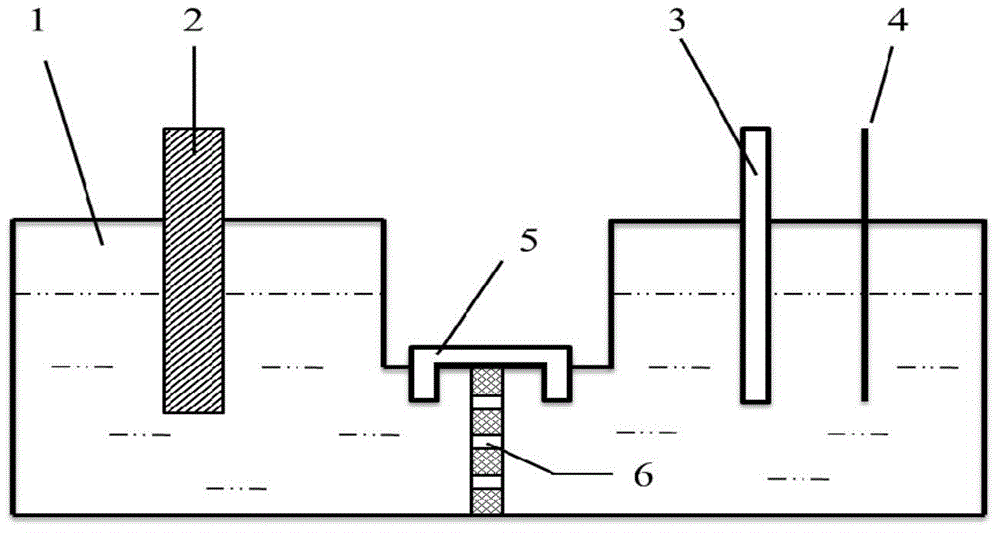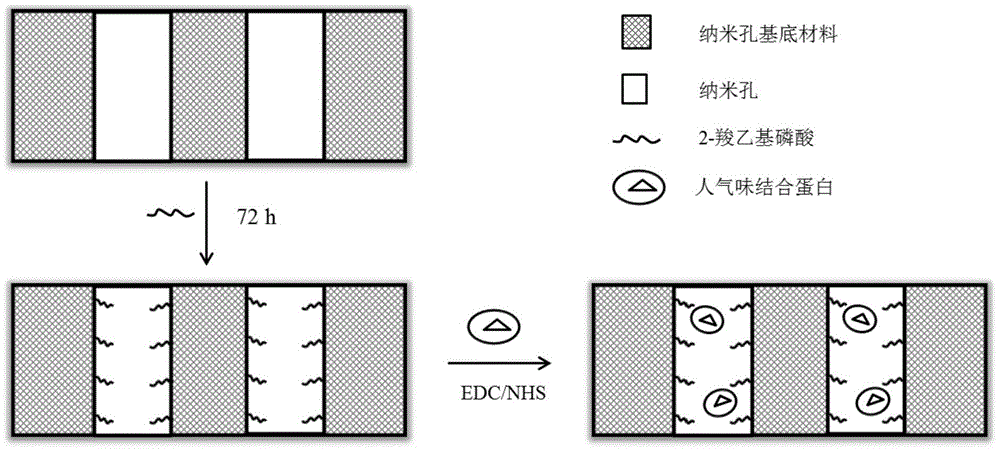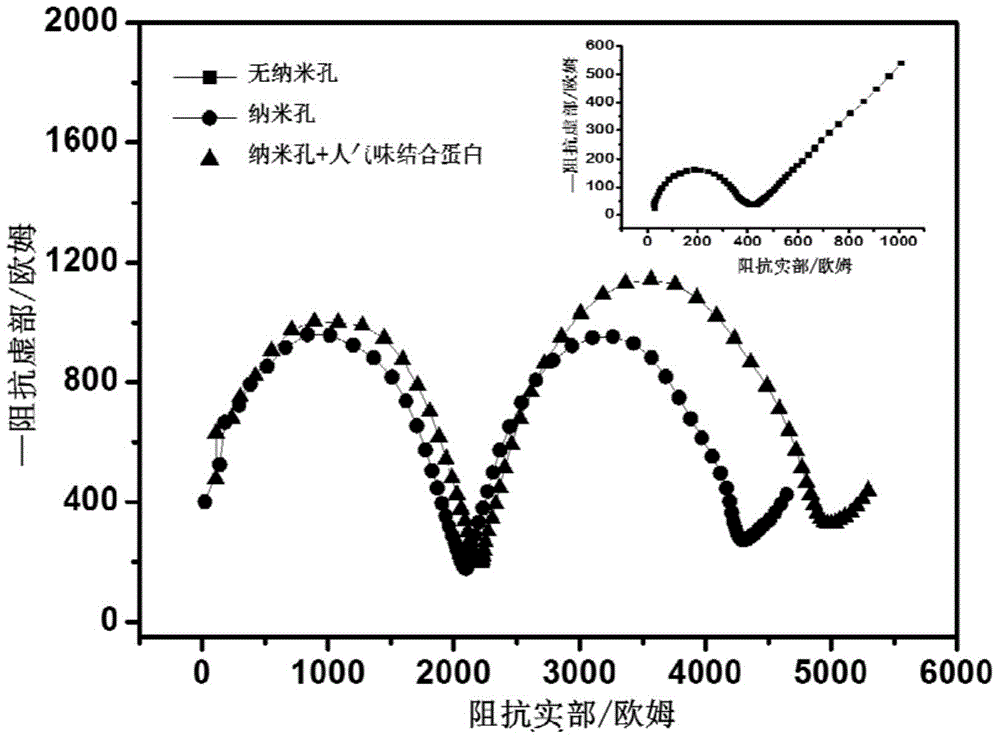Preparation method and applications of human odor binding protein sensor of nano-pore array
An odor-binding protein, nanopore array technology, applied in the direction of electrochemical variables of materials, can solve the problems such as the sensitivity can not meet the requirements, the lower limit of detection, etc., and achieve the effect of high detection sensitivity and low detection limit
- Summary
- Abstract
- Description
- Claims
- Application Information
AI Technical Summary
Problems solved by technology
Method used
Image
Examples
Embodiment Construction
[0028] The present invention will be described in detail below in conjunction with the accompanying drawings and specific embodiments, but the present invention is not limited.
[0029] The preparation method of the human odor binding protein sensor based on the nanopore array of the present invention comprises the following steps:
[0030] 1. Processing of nanohole arrays.
[0031] The nanopore array 6 was fabricated using a standard two-step anodic oxidation method. For the first time, cut high-purity (above 99.99%) aluminum foil into a suitable size substrate, wipe it gently with a fine velvet cloth, and perform mechanical polishing. Prepared substrates were cleaned in ultrapure water and acetone solution by ultrasonic degreasing for 10 minutes, rinsed with ultrapure water after taking out, and then washed with phosphoric acid containing 5% by mass, sulfuric acid with 5% by mass and 0.2 The chromium trioxide mixed solution of M is used to electrochemically polish the subs...
PUM
 Login to View More
Login to View More Abstract
Description
Claims
Application Information
 Login to View More
Login to View More - R&D
- Intellectual Property
- Life Sciences
- Materials
- Tech Scout
- Unparalleled Data Quality
- Higher Quality Content
- 60% Fewer Hallucinations
Browse by: Latest US Patents, China's latest patents, Technical Efficacy Thesaurus, Application Domain, Technology Topic, Popular Technical Reports.
© 2025 PatSnap. All rights reserved.Legal|Privacy policy|Modern Slavery Act Transparency Statement|Sitemap|About US| Contact US: help@patsnap.com



